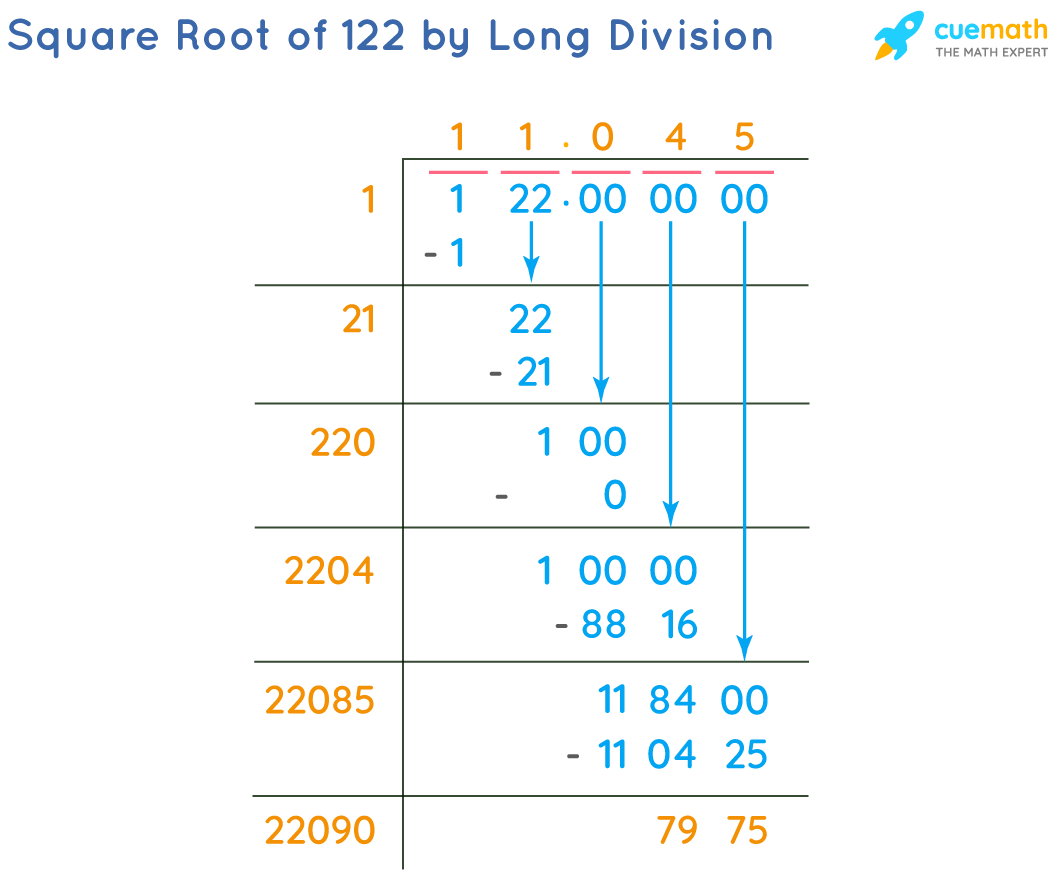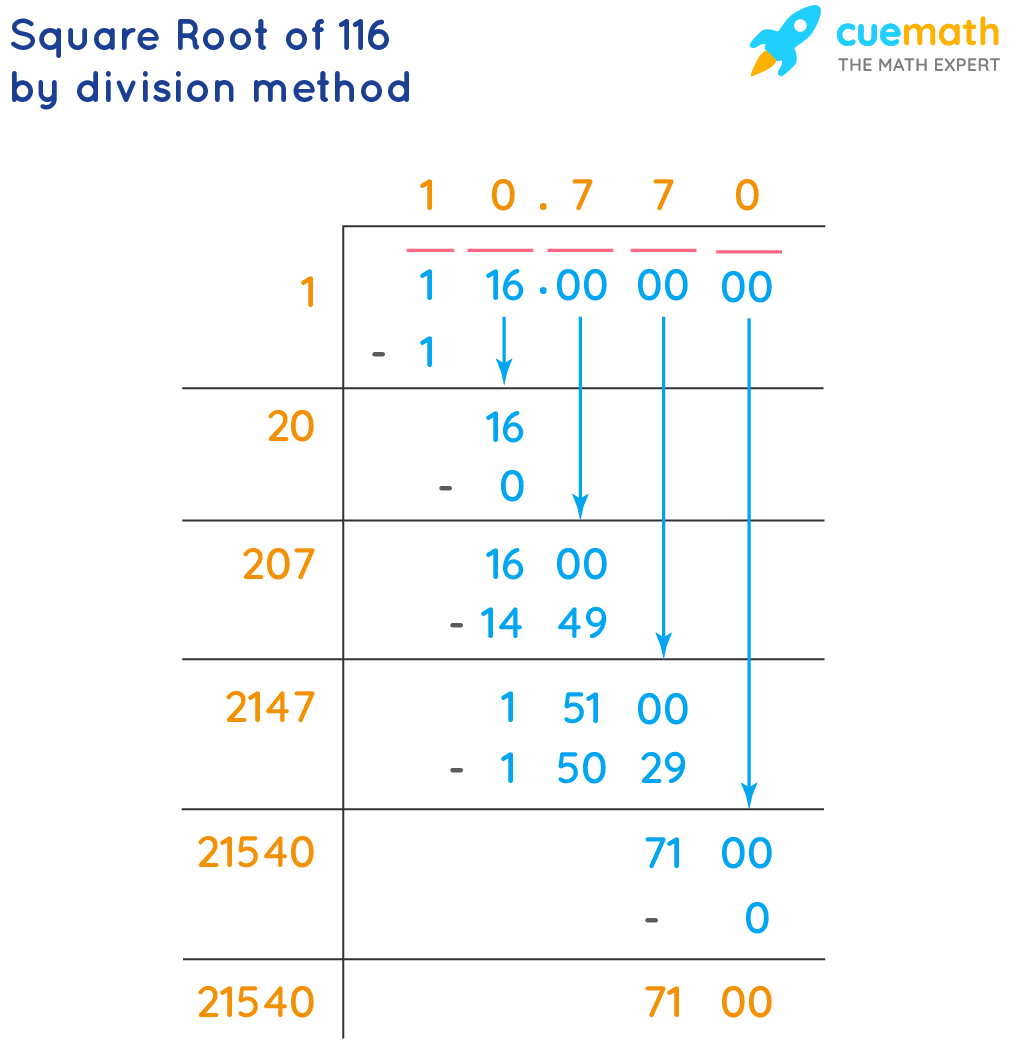Topic simplify square root of 120: Understanding how to simplify the square root of 120 can be straightforward and rewarding. By breaking it down step-by-step, you can simplify √120 into a more manageable form, making your calculations easier and more efficient. Learn the techniques and methods used to simplify square roots and enhance your math skills today.
Table of Content
- Simplifying the Square Root of 120
- Introduction
- Prime Factorization Method
- Steps to Simplify √120
- Properties of √120
- Examples and Applications
- FAQs
- YOUTUBE: Hướng dẫn chi tiết cách đơn giản hóa căn bậc hai của 120. Video này giúp bạn hiểu rõ hơn về phương pháp phân tích thừa số nguyên tố và cách áp dụng để đơn giản hóa sqrt(120).
Simplifying the Square Root of 120
To simplify the square root of 120, we use the prime factorization method. Let's go through the steps:
Prime Factorization
First, we find the prime factors of 120:
\[ 120 = 2 \times 2 \times 2 \times 3 \times 5 \]
Rewriting the Square Root
Next, we rewrite the square root of 120 using these factors:
\[ \sqrt{120} = \sqrt{2 \times 2 \times 2 \times 3 \times 5} \]
Grouping and Simplifying
We can group the factors in pairs to simplify:
\[ \sqrt{120} = \sqrt{(2 \times 2) \times 2 \times 3 \times 5} \]
This simplifies further to:
\[ \sqrt{120} = 2 \times \sqrt{2 \times 3 \times 5} \]
Therefore, we have:
\[ \sqrt{120} = 2\sqrt{30} \]
Decimal Form
The square root of 30 is approximately 5.477, so:
\[ \sqrt{120} \approx 2 \times 5.477 = 10.954 \]
Hence, the simplified form of the square root of 120 is \( 2\sqrt{30} \), and the approximate decimal value is 10.954.
Properties
- The square root of 120 is an irrational number because its decimal form is non-terminating and non-repeating.
- It is a real number.
For more information and examples, visit the sources:

READ MORE:
Introduction
In this article, we will explore the process of simplifying the square root of 120. Simplifying square roots is an essential skill in mathematics that helps in solving various problems more efficiently. We will break down the prime factorization method, provide a step-by-step guide, and illustrate the process with examples to ensure a clear understanding of how to simplify √120.
- Prime Factorization Method
- Step-by-Step Guide to Simplify √120
- Examples of Simplification
- Understanding the Concept of Simplified Radical Form
| Prime Factorization: | 120 = 2 × 2 × 2 × 3 × 5 |
| Simplified Form: | 2√30 |
| Decimal Form: | ≈ 10.954 |
- Start by breaking down 120 into its prime factors: 120 = 2 × 2 × 2 × 3 × 5.
- Group the prime factors into pairs: (2 × 2) × 2 × 3 × 5.
- Take one number from each pair and place it outside the radical: 2√(2 × 3 × 5).
- Simplify the expression under the radical: 2√30.
- The simplified form of √120 is 2√30.
This approach not only simplifies the expression but also aids in understanding the concept of radicals and their applications in various mathematical problems.
Prime Factorization Method
To simplify the square root of 120 using the prime factorization method, we follow these detailed steps:
- First, find the prime factors of 120:
- 120 is even, so divide by 2: 120 ÷ 2 = 60.
- 60 is even, so divide by 2 again: 60 ÷ 2 = 30.
- 30 is even, so divide by 2 again: 30 ÷ 2 = 15.
- 15 is divisible by 3: 15 ÷ 3 = 5.
- 5 is a prime number.
Therefore, the prime factorization of 120 is: 2 × 2 × 2 × 3 × 5, or \(2^3 \times 3 \times 5\).
- Next, pair the prime factors to simplify the radical:
- We have \(2^3\), which includes a pair of 2s: \(2^2 \times 2 \times 3 \times 5\).
- This can be grouped as \( (2^2) \times (2 \times 3 \times 5) \).
- Now, take the square root of each group:
- \(\sqrt{2^2} = 2\).
- The remaining part under the square root is \(2 \times 3 \times 5 = 30\).
- Combine the simplified parts:
\(\sqrt{120} = 2 \sqrt{30}\).
Therefore, the simplified form of the square root of 120 using prime factorization is \(2 \sqrt{30}\).
Steps to Simplify √120
Simplifying the square root of 120 involves breaking down the number into its prime factors and simplifying the radical expression. Here are the detailed steps:
- Factor 120 into its prime factors:
- Rewrite the prime factorization under the square root:
- Group the prime factors into pairs:
- Simplify by taking the square root of each pair:
- Write the simplified form:
\[
120 = 2 \times 2 \times 2 \times 3 \times 5 = 2^3 \times 3 \times 5
\]
\[
\sqrt{120} = \sqrt{2^3 \times 3 \times 5}
\]
\[
\sqrt{120} = \sqrt{(2^2) \times 2 \times 3 \times 5}
\]
\[
\sqrt{120} = \sqrt{2^2} \times \sqrt{2 \times 3 \times 5} = 2 \times \sqrt{30}
\]
\[
\sqrt{120} = 2\sqrt{30}
\]
Thus, the simplified form of the square root of 120 is \(2\sqrt{30}\).
Properties of √120
The square root of 120 has several interesting properties:
- Irrational Number: √120 is an irrational number, meaning it cannot be expressed as a simple fraction. Its decimal representation is non-terminating and non-repeating.
- Decimal Form: The decimal approximation of √120 is approximately 10.954451150103.
- Radical Form: The simplified radical form of √120 is 2√30, derived from its prime factorization.
- Non-Negative Property: The square root of a non-negative number is also non-negative.
- Multiplicative Property: For any non-negative real numbers a and b, √(a*b) = √a * √b. For example, √120 = √(4*30) = √4 * √30 = 2√30.
- Geometry Application: In geometry, the square root function can be used to determine the side length of a square given its area. If the area is 120 square units, then the side length is √120 units.
Understanding these properties is useful in various mathematical and real-world contexts, such as solving equations and performing measurements.

Examples and Applications
Simplifying square roots, such as \(\sqrt{120}\), is not only a fundamental mathematical skill but also has practical applications in various fields. Here are some examples and applications where this knowledge is useful:
1. Solving Quadratic Equations
Quadratic equations often require simplification of square roots. For example, if you need to solve the equation \(x^2 = 120\), you would simplify the solution as \(x = \pm\sqrt{120} = \pm2\sqrt{30}\).
2. Geometry
In geometry, simplifying square roots is essential for calculating distances, areas, and other measurements. For instance:
- Finding the diagonal of a rectangle: If a rectangle has sides of 10 and 12 units, the diagonal \(d\) is given by \(d = \sqrt{10^2 + 12^2} = \sqrt{244} = 2\sqrt{61}\).
- Determining the radius of a circle given its area: If the area \(A\) is 120 square units, the radius \(r\) is \(r = \sqrt{\frac{A}{\pi}} = \sqrt{\frac{120}{\pi}}\).
3. Physics
Simplifying square roots frequently appears in physics, particularly in formulas involving distances, velocities, and energies. For example, the formula for the period \(T\) of a pendulum is \(T = 2\pi\sqrt{\frac{L}{g}}\), where \(L\) is the length and \(g\) is the acceleration due to gravity.
4. Engineering
In engineering, square roots are simplified to solve problems related to structural design, electrical circuits, and fluid dynamics. For instance, calculating the root mean square (RMS) value of an alternating current (AC) signal involves square roots.
5. Real-World Problem Solving
Outside of academic and professional fields, simplifying square roots can help in everyday problem-solving scenarios. For example:
- Determining the side length of a square plot of land with a given area.
- Estimating distances using the Pythagorean theorem in navigation and mapping.
6. Computer Graphics
In computer graphics, square roots are used in algorithms for rendering, collision detection, and image processing. Simplifying these calculations improves the efficiency of the software.
Overall, mastering the simplification of square roots enhances one's ability to tackle a wide range of mathematical and real-world problems efficiently.
FAQs
What is the exact value of √120?
The exact value of √120 in its simplest radical form is \(2\sqrt{30}\).
Is √120 a rational number?
No, \(\sqrt{120}\) is an irrational number because its decimal form is non-terminating and non-repeating.
What is the decimal form of √120?
The decimal form of \(\sqrt{120}\) is approximately 10.954.
Why is √120 an irrational number?
\(\sqrt{120}\) is an irrational number because it cannot be expressed as a ratio of two integers and its decimal expansion does not terminate or repeat.
Is the square root of 120 a real number?
Yes, the square root of 120 is a real number because it exists on the number line and can be approximated by a decimal.
Can you simplify √120 further?
No, \(\sqrt{120}\) is already in its simplest radical form as \(2\sqrt{30}\).
How can I use the square root of 120 in real-world applications?
Simplifying square roots like \(\sqrt{120}\) can be useful in various applications such as solving quadratic equations, finding distances, and working with geometric shapes in mathematics and engineering.
Hướng dẫn chi tiết cách đơn giản hóa căn bậc hai của 120. Video này giúp bạn hiểu rõ hơn về phương pháp phân tích thừa số nguyên tố và cách áp dụng để đơn giản hóa sqrt(120).
Cách Đơn Giản Hóa Căn Bậc Hai của 120: sqrt(120)
READ MORE:
Hướng dẫn chi tiết cách đơn giản hóa căn bậc hai của 120. Video này sẽ giúp bạn hiểu rõ hơn về phương pháp đơn giản hóa căn 120 bằng cách phân tích thừa số nguyên tố.
Đơn Giản Hóa Căn Bậc Hai của 120, sqrt(120) | Đơn Giản Hóa Căn 120













